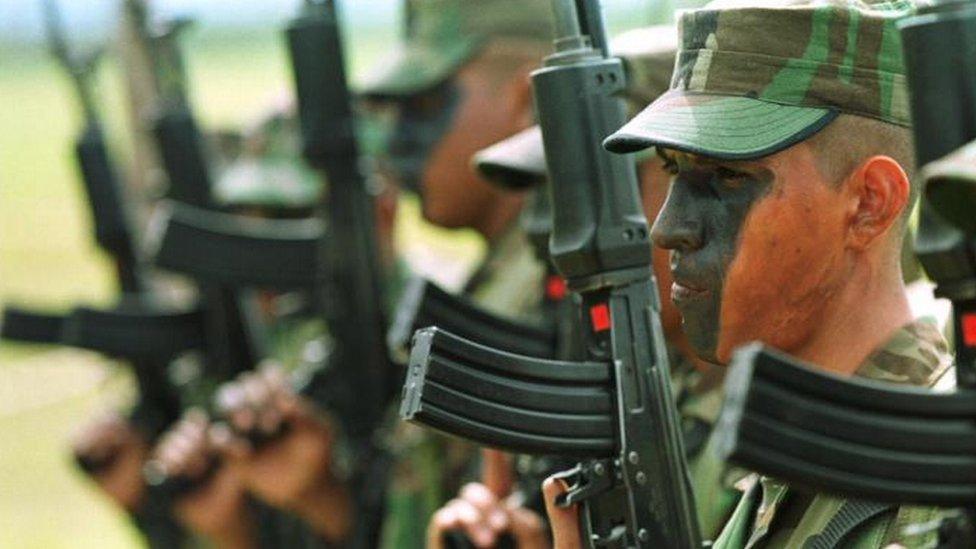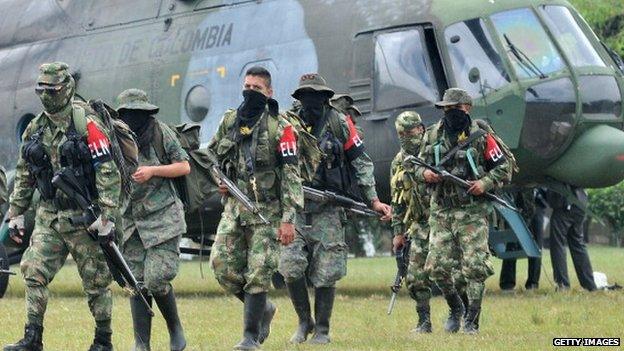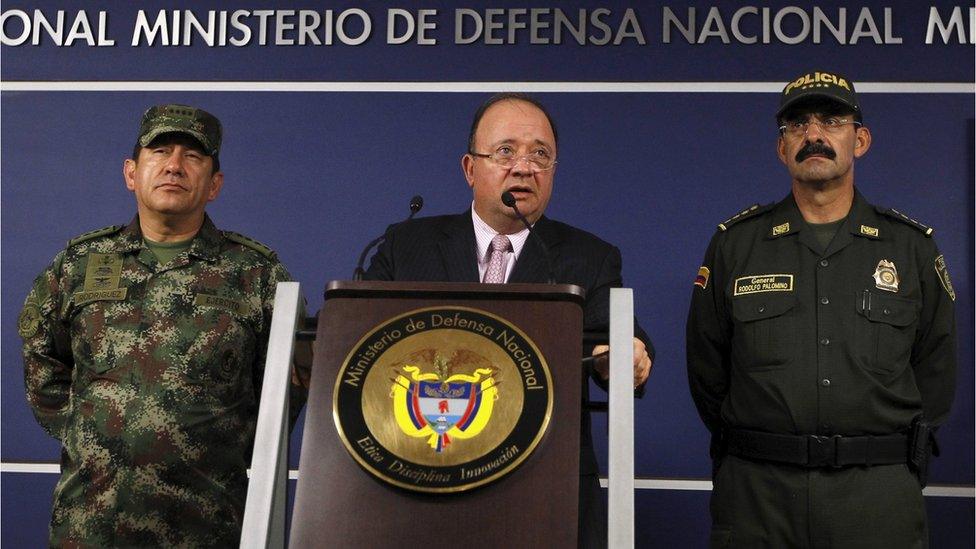Colombia steps up fight against ELN rebels after attack
- Published

The conflict between government troops and the rebels has been going on since the early 1960s
Colombia's President Juan Manuel Santos said the military would intensify its operations against the country's second-biggest rebel group, the ELN or National Liberation Army.
He said he had given the order after an attack on Monday on a military brigade blamed on the ELN.
He said the country would not be held to ransom by the rebels.
Preliminary talks with the ELN started two years ago during negotiations with the larger Farc rebel group.
The government is hoping to reach a final accord with Farc in the coming months.
President Santos said he had ordered the military "to intensify operations against the ELN and all the forms of delinquency that stem from its presence".
The attack has raised tension as Colombia tried to include the ELN in peace negotiations alongside the Farc.
"The ELN is dead wrong if it thinks that with attacks like this it can smooth the path to peace," the president said.
"If they think it will strengthen their position at the negotiating table, they are totally mistaken."
President Santos launched efforts to convene formal peace talks with the ELN in 2014 without calling for a ceasefire between the group and military forces.
He is demanding that the ELN release two captives as a condition for any peace deal.
Farc negotiators in Havana, where talks have been taking place, say they believe the ELN was ready to start negotiations.
"The ELN cannot stay outside the peace process," said the Farc's chief negotiator, Ivan Marquez.

ELN

Some ELN members have demobilised, but an estimated 2,000 are still fighting
Founded in 1964 as a Marxist guerrilla group to fight Colombia's unequal distribution of land and riches
Estimated to have some 2,000 active fighters
Strongholds in the provinces of Arauca, Narino and Norte de Santander
Financed by extortion, drug trafficking and kidnappings for ransom

- Published27 October 2015

- Published29 August 2013